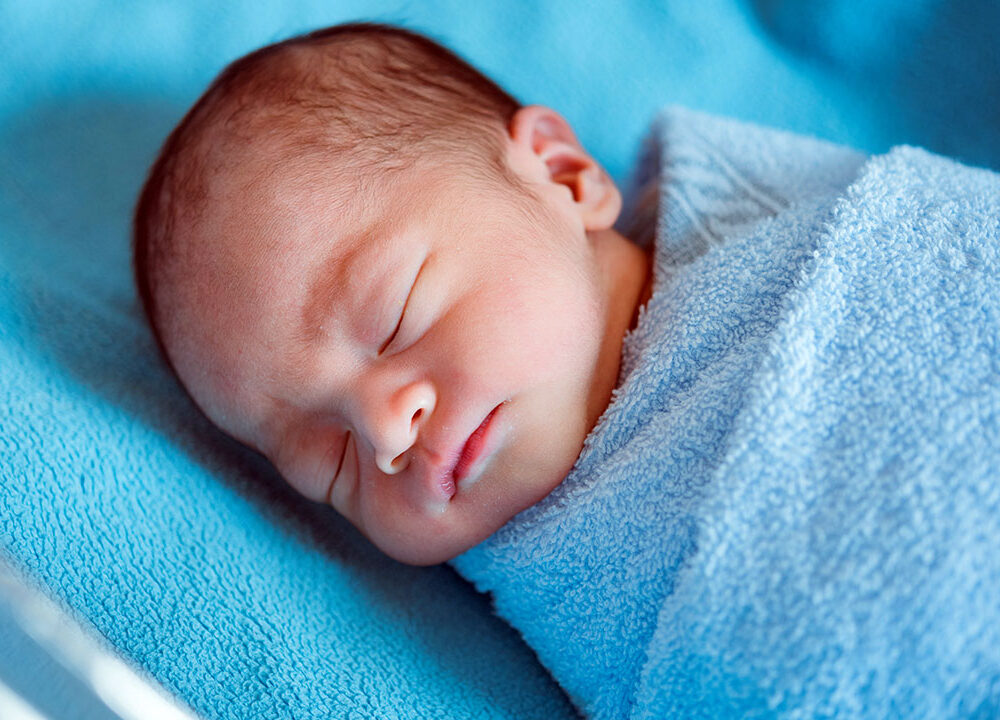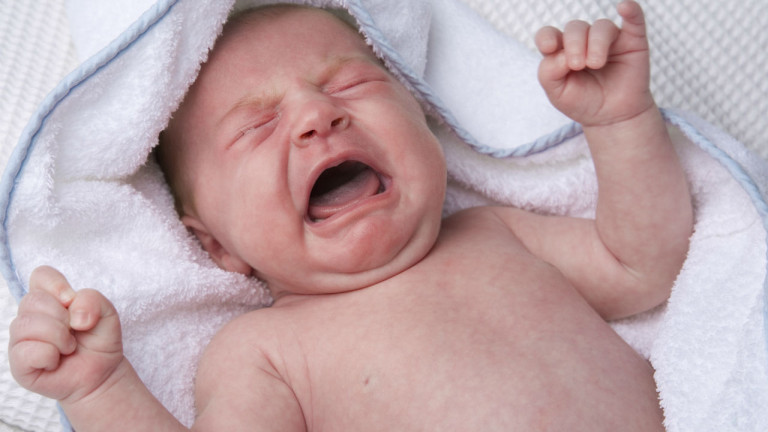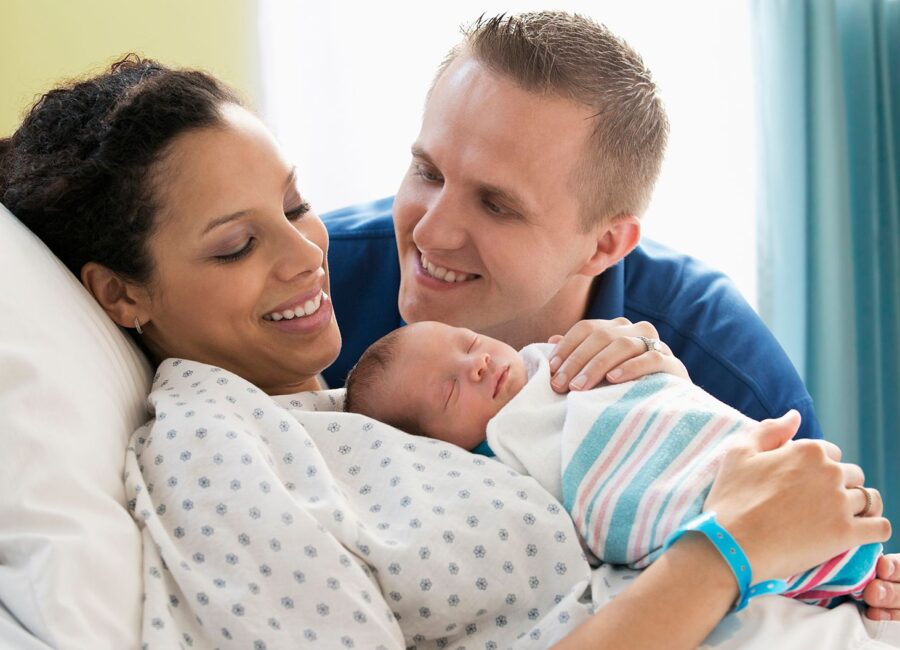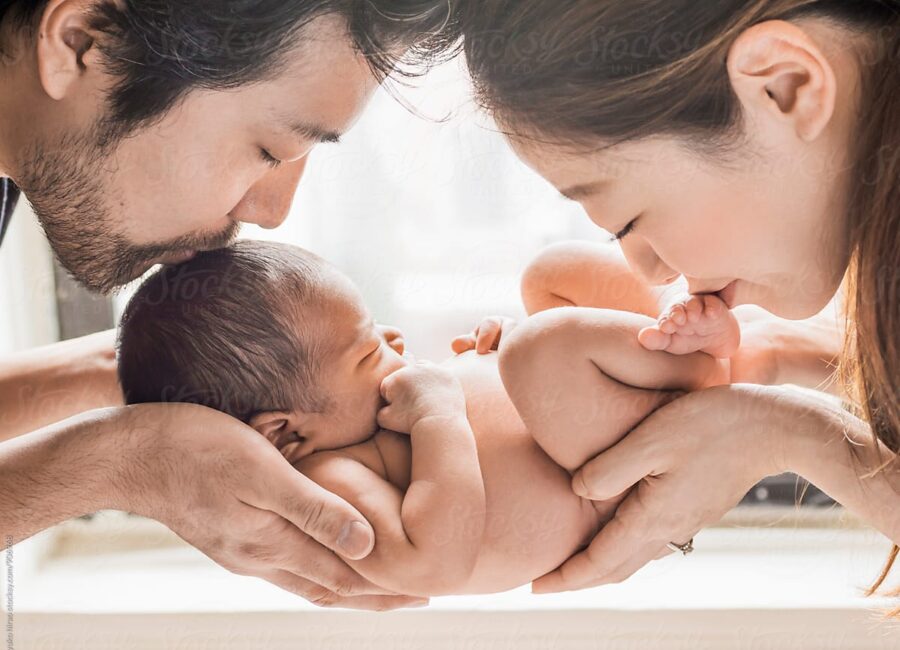
The best sleeping position for babies turns out to be able to prevent babies from dangerous risks, namely SIDS.
Some parents often let their babies sleep in various positions, such as on their sides and even on their stomachs just to avoid worrying about the baby’s head being cradled.
Some baby sleeping positions are unsafe and can cause sudden infant death syndrome (SIDS). So, what are the good, comfortable, or wrong sleeping positions for babies? Here’s the explanation.
Dangerous baby sleeping position

Before knowing the correct and comfortable baby sleeping position, parents need to see some sleeping positions that can trigger sudden infant death (SIDS) or other health problems, namely:
1. Baby sleeps on his side
Sleeping on your side is not a good sleeping position for babies. Citing the American Academy of Pediatrics, babies sleeping on their side increases the risk of newborns up to 1 year of age experiencing sudden death.
Then, sleeping in a sideways position also makes it easy for the baby to roll over so that the baby’s stomach is in a downward position.
This condition causes the airway to be blocked and makes it difficult for the baby to breathe.
The side sleeping position makes the baby breathe back the air that has been exhaled so that he may be deprived of oxygen and fresh air.
In addition, sleeping on your side can also increase your risk of torticollis or neck pain, which causes your head to tilt downwards.
Babies with torticollis tend to sleep on their side to reduce pain further. Sleeping on your side is dangerous for babies.
2. Baby sleeps on his stomach
This baby’s sleeping position is even the central position that causes babies to die suddenly. Quoting from research published by The American Academy of Family Physicians, sleeping on your stomach increases your risk of having difficulty breathing.
If it is difficult to breathe, the baby will also have difficulty getting oxygen and increase the risk of carbon dioxide poisoning. This condition is known as hypercapnia.
In general, avoid putting your baby to sleep on his stomach until one year old.
Especially at the age of 4-6 months, babies are still learning to roll over. So, there is a possibility that he is in a prone position that is dangerous for him.
In addition, quoted from research published in the Archives of Pediatrics & Adolescent Medicine, there is also a risk of babies having difficulty lifting and turning their heads from a prone position.
So, it blocked his airway, so he had difficulty breathing and died suddenly.
The best sleeping position for babies

So, what is the best and most comfortable sleeping position for babies?
The answer is to make the baby sleep on his back. When on his back, the position of the baby’s head during sleep is not blocked by anything so that he can breathe easily.
Therefore, supine is the correct sleeping position for babies because it has been proven to reduce the risk of choking and sudden death due to obstructions in their breathing.
Research from the JAMA Network found that the number of SIDS cases was reduced by more than 50%, especially in countries that educate parents to put babies to sleep in the supine position.
Suppose you’re worried that your baby will choke on their saliva during sleep. The prone position is a comfortable sleeping position for babies.
The body and gag reflex can prevent the baby from choking when he sleeps on his back. So, you don’t have to worry about maintaining the correct and comfortable sleeping position for this baby.
What to watch out for when the baby sleeps
The correct sleeping position for the baby and several other tips to prevent the baby from choking and developing SIDS. The Centers for Disease Control and Prevention has also summarized it into several essential points, including:
1. Get rid of everything in the baby’s bed
When placing the baby on the mattress, make sure the bed is empty. Get rid of toys, pillows, and blankets before the baby goes to sleep.
Some parents may provide a blanket or thick sheets to keep the baby warm while sleeping.
A different study from the American Academy of Pediatrics found that 34% of sudden infant deaths were caused by blankets blocking the baby’s airway.
Likewise, when you use a pillow so that the baby’s head position is higher. Instead, avoid using pads because they are unsafe and risk sudden death.
2. Use a firm and flat mattress
Maybe you think that a soft and fluffy mattress will provide comfort for the baby, and this is wrong. A soft and silky mattress surface increases the risk of SIDS.
A solid and firm mattress surface can maintain the correct sleeping position of the baby so that it remains on its back, does not slump, and reduces the risk of sleeping on its side or its stomach.
Soft mattresses make the mattress bend to follow the baby’s body shape, so the curves interfere with the baby’s respiratory tract.
Also, don’t use a car seat, stroller, sling, or baby swing as a substitute for a mattress, especially if your baby is under four months of age.
The baby’s sling makes his head and face prone to face downwards, blocking his breathing.
Meanwhile, if the car seat is placed other than in the car, the surface becomes unstable, making the baby’s position slump or his neck bend.
3. Make sure the baby is in a separate bed
To monitor the baby’s sleeping position is excellent and comfortable, you should not sleep in the same bed with him but still in the same room. If you are under monitoring, it will reduce the risk of the baby’s sleeping position on his stomach.
Make sure it can easily reach the position of the baby’s mattress. So you can monitor, nurse, and soothe her without a hitch.
Why should he be on a separate bed with his parents? Sleeping in the same bed increases the risk of SIDS by up to 50%. If you share a bed with a baby, the baby’s risk of dying from being squashed is 47%.
4. Choose comfortable baby sleepwear
Parents also need to pay attention to baby sleepwear. Instead of using a blanket, use a comfortable nightgown, not too tight or loose on the baby. Also, choose clothes that are thin and cool.
5. Keep the room temperature cool
In addition to the correct sleeping position of the baby, also pay attention to the room temperature when he sleeps. The bedroom for the baby should be at a cool temperature, and if it is too hot or cold, he will feel uncomfortable.
Important notes about the best sleeping position for babies

The correct and safest sleeping position for babies is the prone position. This sleeping position can prevent the baby from having difficulty breathing and reduce the risk of sudden death.
So, what are the risks for babies who have a flat head? You don’t need to worry because it can prevent this, here’s how:
- Change the baby’s sleeping position, not to be on his side or stomach. Make sure the baby’s head and feet positioned when on his back are always in different places. You can also turn your head slightly to the right or the left every 1-2 hours.
- Carry the baby when not sleeping so that the head does not lean for a long time.
- Do tummy time or practice with your chest, head, and neck lift on your stomach. It also strengthens the baby’s muscles.
- Supervise your baby even when he is sleeping.




